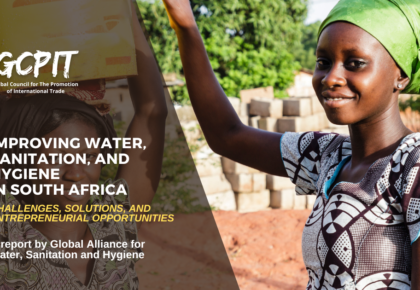
India, with a population of over 1.3 billion people, faces severe water, sanitation, and hygiene (WASH) challenges. Access to clean water and sanitation facilities is limited, particularly in rural areas. Inadequate sanitation has resulted in high rates of water-borne illnesses, leading to serious health and economic consequences. The Indian government has taken several initiatives to improve WASH conditions in the country, such as the Swachh Bharat Abhiyan and the National Rural Drinking Water Programme. However, there are still significant challenges to be addressed. This report examines the WASH challenges in India, the solutions implemented by the government, and the opportunities for entrepreneurs to contribute to improving WASH conditions.
Challenges: India faces several WASH challenges, particularly in rural areas. The major challenges include:
- Lack of Access to Clean Water: Over 163 million people in India lack access to clean water, and 21 percent of the country’s communicable diseases are caused by unsafe water.
- Inadequate Sanitation Facilities: India has the highest number of people practicing open defecation in the world. According to UNICEF, nearly 50 percent of India’s population defecates in the open, leading to environmental pollution and spreading of diseases.
- Poor Hygiene Practices: Lack of knowledge and awareness of basic hygiene practices such as hand washing and personal hygiene leads to increased risks of disease transmission.
- Infrastructure Challenges: Lack of proper infrastructure to store and distribute clean water and dispose of waste creates additional challenges.
- Urbanization: Rapid urbanization in India has put pressure on existing water supply systems, leading to inadequate water supply and sanitation facilities.
- Climate Change: Climate change is expected to increase water scarcity in India, exacerbating the existing WASH challenges.
- Funding: Insufficient funding for WASH programs and lack of political will is another significant challenge.
- Poor Maintenance: Lack of proper maintenance of WASH facilities results in breakdowns and a decrease in the lifespan of facilities.
- Gender Inequality: Women and girls are disproportionately affected by the lack of WASH facilities, particularly in rural areas, where they face difficulties in accessing water and sanitation facilities.
- Cultural Practices: Some cultural practices in India, such as caste-based discrimination, limit access to WASH facilities for certain communities.
Solutions Implemented by the Country: India has implemented various solutions to tackle the challenges of water, sanitation, and hygiene. Here are ten of the top and unique solutions:
- Swachh Bharat Abhiyan: Launched in 2014, Swachh Bharat Abhiyan (Clean India Mission) is a national campaign aimed at achieving universal sanitation coverage and ensuring clean and open defecation-free (ODF) India by 2nd October 2019. The program has constructed over 110 million toilets, which resulted in 22 states, and more than 700 districts and 600,000 villages declared open defecation free.
- Jal Shakti Abhiyan: The Jal Shakti Abhiyan (Water Power Mission) was launched in 2019 to address the water scarcity and ensure the conservation of water resources. The mission focuses on five key intervention areas: water conservation and rainwater harvesting, renovation of traditional water bodies, reuse of treated wastewater, interlinking of rivers, and implementing groundwater recharge measures. Under this mission, more than 1.54 lakh water bodies have been renovated or constructed.
- Community-Led Total Sanitation: Community-Led Total Sanitation (CLTS) is an innovative approach to promote the concept of open defecation-free communities. It involves community mobilization, triggering, and facilitating the process of behavior change. In 2015, over 7.5 lakh villages in India were declared open defecation-free, and CLTS played a significant role in this achievement.
- E-toilets: India has installed e-toilets in several public places to provide clean and hygienic sanitation facilities. E-toilets are self-cleaning and eco-friendly. These toilets are equipped with sensors and devices that flush, clean, and disinfect the toilet seats automatically after use.
- Bio-digesters: Bio-digester toilets have been installed in several rural areas of India. These toilets use bacterial decomposition to convert human waste into water and biogas. They are odorless, low maintenance, and do not require any connection to a sewage system. Bio-digesters have proven to be a cost-effective and sustainable solution for providing sanitation facilities in rural areas.
- Rainwater Harvesting: India has made significant efforts towards rainwater harvesting to replenish groundwater reserves. Many states have mandated rainwater harvesting for all new constructions, including residential and commercial buildings. Rainwater harvesting has also been implemented in schools and public buildings.
- Mobile Toilets: Mobile toilets have been installed in various public areas, including bus stands, railway stations, and crowded marketplaces. These toilets are easy to move and provide temporary sanitation facilities for large gatherings or events.
- Public-Private Partnerships: The government has formed public-private partnerships to address the water, sanitation, and hygiene challenges in the country. These partnerships have been effective in implementing innovative solutions and achieving results quickly.
- Sanitation Workers’ Training: India has initiated programs to provide training to sanitation workers to ensure their safety and promote the use of modern and safe technologies for waste management.
- Behavior Change Communication: India has implemented a behavior change communication approach to promote the adoption of safe sanitation practices. This approach involves community mobilization, education, and awareness campaigns to promote the importance of hygiene and sanitation.
These solutions have played a significant role in addressing the water, sanitation, and hygiene challenges in India. The government’s efforts, along with public-private partnerships, have resulted in positive outcomes, including an increase in sanitation coverage and a decrease in open defecation.
Opportunities for Entrepreneurs: India’s water, sanitation, and hygiene (WASH) sector presents significant opportunities for entrepreneurs to provide innovative solutions to address the challenges faced in the country. With a growing population and rapid urbanization, India is facing a critical shortage of WASH infrastructure, particularly in rural areas. The government’s Swachh Bharat Abhiyan (Clean India Mission) initiative has created a conducive environment for entrepreneurs to contribute to addressing the WASH challenges through innovation. Here are ten unique opportunities for entrepreneurs to make a difference in India’s WASH sector:
- Innovative Toilet Solutions: Entrepreneurs can develop cost-effective, water-efficient, and sustainable toilet solutions for both rural and urban areas. This can include dry toilets, composting toilets, and bio-toilets that use bio-digesters to convert human waste into usable biogas.
- Water Purification Systems: With the majority of India’s population still relying on untreated or contaminated water sources, there is a need for innovative water purification systems that are affordable, easy to use, and effective in removing harmful contaminants.
- Mobile Sanitation Units: Mobile sanitation units can be designed for temporary use in densely populated areas, such as slums or during festivals and events, where access to permanent sanitation facilities is limited.
- Community-Led Total Sanitation Programs: Entrepreneurs can collaborate with local communities to develop community-led total sanitation programs that focus on changing behavior and creating awareness about the importance of sanitation and hygiene practices.
- Sanitation Financing: Entrepreneurs can develop innovative financing models to help individuals, communities, and organizations access sanitation facilities and services. This can include microfinance options or creating partnerships with financial institutions to provide loans for WASH infrastructure.
- Waste Management Systems: Entrepreneurs can develop innovative waste management systems that promote waste segregation and recycling, reducing the amount of waste that ends up in landfills and contributing to a more sustainable environment.
- Rainwater Harvesting Systems: With increasing water scarcity in many parts of the country, entrepreneurs can develop rainwater harvesting systems for households, commercial buildings, and communities, promoting water conservation and sustainable use.
- Smart Water Metering: Entrepreneurs can develop smart water metering systems that allow for real-time monitoring of water usage, reducing wastage and promoting responsible water usage.
- WASH Training and Capacity Building: Entrepreneurs can develop training programs that focus on WASH practices, including hygiene, sanitation, and water conservation, and capacity-building programs for local communities, government bodies, and organizations.
- Water ATMs: Water ATMs are automated water dispensing machines that provide clean drinking water at affordable prices. Entrepreneurs can set up water ATMs in urban and rural areas, providing access to safe drinking water to communities without access to safe water sources.
Overall, the WASH sector presents significant opportunities for entrepreneurs to make a difference in India. By addressing the challenges faced by the country through innovative solutions and business models, entrepreneurs can create a positive impact while also contributing to the country’s economic growth.
Outcome of the solutions: Water, sanitation, and hygiene (WASH) are crucial for the health, well-being, and socio-economic development of a country. India has made significant progress in addressing the challenges related to WASH, particularly in the last few decades. The government, in collaboration with various stakeholders, has implemented several solutions to improve access to clean water, proper sanitation, and hygiene practices. These efforts have resulted in various positive outcomes, including improved health outcomes, increased economic productivity, and better living standards for the people.
Here are ten top and unique outcomes of the solutions implemented by India to improve WASH:
- Improved access to clean water: India has made significant progress in providing access to clean drinking water. As of 2021, over 96% of the rural population and 99% of the urban population have access to improved water sources (WHO/UNICEF, 2021). This has resulted in a reduction in water-borne diseases such as diarrhea, cholera, and typhoid fever.
- Increased access to sanitation facilities: India has also made significant progress in improving access to sanitation facilities. As of 2021, over 94% of the urban population and 68% of the rural population have access to improved sanitation facilities (WHO/UNICEF, 2021). This has led to a reduction in open defecation and improved hygiene practices, resulting in improved health outcomes.
- Reduced infant mortality: The improved access to clean water and sanitation facilities has led to a reduction in infant mortality rates in India. Between 2000 and 2019, the infant mortality rate in India decreased from 66 to 28 deaths per 1,000 live births (World Bank, 2021). This reduction can be attributed to improved WASH practices.
- Improved maternal health: Improved access to clean water and sanitation facilities has also led to improved maternal health outcomes in India. Access to clean water and sanitation facilities during childbirth has led to a reduction in infections and maternal mortality rates.
- Increased economic productivity: Improved WASH practices have also led to increased economic productivity in India. Reduced absenteeism due to illness, particularly among children, has led to increased school attendance and improved learning outcomes. In addition, improved access to clean water has led to increased agricultural productivity, particularly in rural areas.
- Improved tourism industry: Improved WASH practices have also contributed to the growth of the tourism industry in India. Tourists are more likely to visit places with clean water and proper sanitation facilities. The government’s efforts to promote clean tourism have resulted in an increase in the number of tourists visiting India.
- Improved gender equality: Improved access to sanitation facilities has also contributed to improved gender equality in India. The provision of separate toilets for girls in schools has led to increased attendance among girls. In addition, the construction of community toilets in urban areas has improved the safety and dignity of women.
- Reduced healthcare costs: Improved WASH practices have also led to a reduction in healthcare costs in India. The prevention of water-borne diseases has resulted in reduced healthcare spending, particularly among the poor.
- Reduced environmental pollution: The government’s efforts to promote WASH practices have also contributed to reduced environmental pollution. Proper disposal of waste and the promotion of water conservation practices have resulted in a reduction in environmental pollution, particularly in urban areas.
-
Increased social awareness: The government’s efforts to promote WASH practices have also led to increased social awareness among the people of India. The Swachh Bharat Abhiyan campaign has raised awareness about the importance of proper sanitation and hygiene practices, resulting in improved community participation in WASH initiatives.
Implication of Private-public partnerships, alliances, and collaborations on country’s water, sanitation, and hygiene (WASH) sector: Public-private partnerships, alliances, and collaboration have played a significant role in improving water, sanitation, and hygiene (WASH) services in India. The government of India has taken several initiatives in collaboration with private sector organizations to achieve its goal of providing safe water, adequate sanitation, and proper hygiene practices to all its citizens.
One of the major implications of such partnerships is the improvement in access to clean water and sanitation facilities. In India, 96% of the urban population and 84% of the rural population now have access to improved drinking water sources, and 68% of the rural population has access to improved sanitation facilities, thanks to the efforts of the government and private sector organizations.
Another significant impact of public-private partnerships is the increased efficiency and effectiveness of service delivery. Private sector organizations bring in expertise, technology, and innovation to the table, which helps to improve the quality and reliability of water and sanitation services. The collaboration between the government and private sector organizations has also led to the creation of innovative financing mechanisms, which have enabled more people to access WASH services.
The partnership between the government of India and the private sector has also led to the creation of new job opportunities, particularly in the rural areas. The Swachh Bharat Mission (Clean India Mission) launched by the government of India in 2014 has created employment opportunities for over 1.7 million people, many of whom are from the rural areas.
Furthermore, the partnership between the government and private sector organizations has helped to improve the health outcomes of the population. Improved access to clean water and sanitation facilities has helped to reduce the burden of waterborne diseases, which are a major cause of illness and death in India. According to a report by the World Health Organization and UNICEF, the proportion of people in India who practice open defecation decreased from 55% in 2014 to 34% in 2019, leading to a reduction in the incidence of diarrheal diseases.
One of the notable public-private partnerships in India is the Millennium Alliance, a partnership between the Department of Science and Technology and the United States Agency for International Development (USAID). The partnership aims to support innovative solutions that address key development challenges, including water and sanitation.
Another example of successful public-private partnership is the partnership between Hindustan Unilever Limited (HUL) and the government of Maharashtra, which aims to provide safe drinking water to rural communities. HUL has set up water treatment plants in several villages in Maharashtra, which provide safe drinking water to the villagers.
Public-private partnerships, alliances, and collaboration have played a crucial role in improving water, sanitation, and hygiene services in India. The collaboration between the government and private sector organizations has led to increased access to safe water and sanitation facilities, improved health outcomes, and the creation of new job opportunities. It is important for the government to continue to engage with private sector organizations to achieve its goal of providing WASH services to all its citizens.
Conclusion: India has made significant progress in addressing the challenges of water, sanitation, and hygiene. However, much work still needs to be done to achieve universal access to these basic services. The challenges faced by the country are immense, including rapid urbanization, population growth, and climate change. In response, the government has implemented a range of solutions, including policies, programs, and initiatives, to improve access to clean water, sanitation, and hygiene.
One of the most important outcomes of these efforts has been the significant increase in access to basic sanitation facilities, with more than 500 million people gaining access since the Swachh Bharat Abhiyan was launched in 2014. The country has also made significant progress in improving access to safe drinking water, with the percentage of households with access to piped water increasing from 24% in 2011 to 47% in 2019.
Private sector engagement and entrepreneurship have played a critical role in addressing the challenges of water, sanitation, and hygiene in India. A range of opportunities exist for entrepreneurs, including the development of new water treatment technologies, the creation of innovative financing models for water and sanitation infrastructure, and the provision of sanitation and hygiene services to underserved communities.
The success of India’s efforts in addressing the challenges of water, sanitation, and hygiene will depend on continued collaboration between the government, private sector, and civil society. Partnerships between these actors will be critical in ensuring that solutions are sustainable and scalable, and that the needs of the most marginalized and vulnerable communities are prioritized.
Access to water, sanitation, and hygiene is a fundamental human right, and it is essential for the health and well-being of individuals and communities. India’s progress in this area has been significant, but there is still a long way to go. The challenges are complex and multi-dimensional, and will require continued commitment, investment, and innovation to overcome. However, by building on the successes of the past, and by leveraging the power of partnerships and entrepreneurship, India can continue to make progress towards achieving universal access to clean water, sanitation, and hygiene for all.
References:
- Ministry of Jal Shakti, Government of India. (2021). Jal Jeevan Mission. Retrieved from https://jaljeevanmission.gov.in/
- United Nations Children’s Fund (UNICEF). (2019). WASH in Schools Empowers Girls’ Education: Proceedings of the Menstrual Hygiene Management in Schools Virtual Conference 2018. Retrieved from https://www.unicef.org/media/61186/file/WASH-in-Schools-Empowers-Girls-Education-2019.pdf
- World Health Organization (WHO). (2020). Water, Sanitation, Hygiene, and Waste Management for the COVID-19 Virus: Interim Guidance. Retrieved from https://www.who.int/publications-detail/water-sanitation-hygiene-and-waste-management-for-the-covid-19-virus-interim-guidance
- Ministry of Housing and Urban Affairs, Government of India. (2021). Swachh Bharat Mission-Urban. Retrieved from https://swachhbharaturban.gov.in/
- National Rural Health Mission. (2011). The Village Health Sanitation and Nutrition Committee. Retrieved from https://www.nhm.gov.in/images/pdf/programmes/village_health_sanitation_and_nutrition_committee_guidelines.pdf
- Ministry of Drinking Water and Sanitation, Government of India. (2021). NRDWP Guidelines. Retrieved from http://jalshakti-dowr.gov.in/sites/default/files/NRDWP%20Guidelines%202019.pdf
- National Institution for Transforming India (NITI Aayog). (2018). Composite Water Management Index: A Tool for Water Management. Retrieved from https://niti.gov.in/sites/default/files/2018-06/CWMI-2.0_0.pdf
- National Institute of Urban Affairs (NIUA). (2020). Unlocking the Power of Finance for WASH: Towards a Comprehensive and Integrated Financing Ecosystem for Urban Water and Sanitation in India. Retrieved from https://www.niua.org/content/599c1b7d-18f2-43f2-bf2c-08d8d84a66f3/Unlocking%20the%20Power%20of%20Finance%20for%20WASH%20-%20NIUA%20Report%20Final.pdf
- WaterAid India. (2021). Impact. Retrieved from https://www.wateraid.org/in/our-impact
- The World Bank. (2019). India – Strengthening Rural Water Supply and Sanitation Project. Retrieved from https://projects.worldbank.org/en/projects-operations/project-detail/P166968







